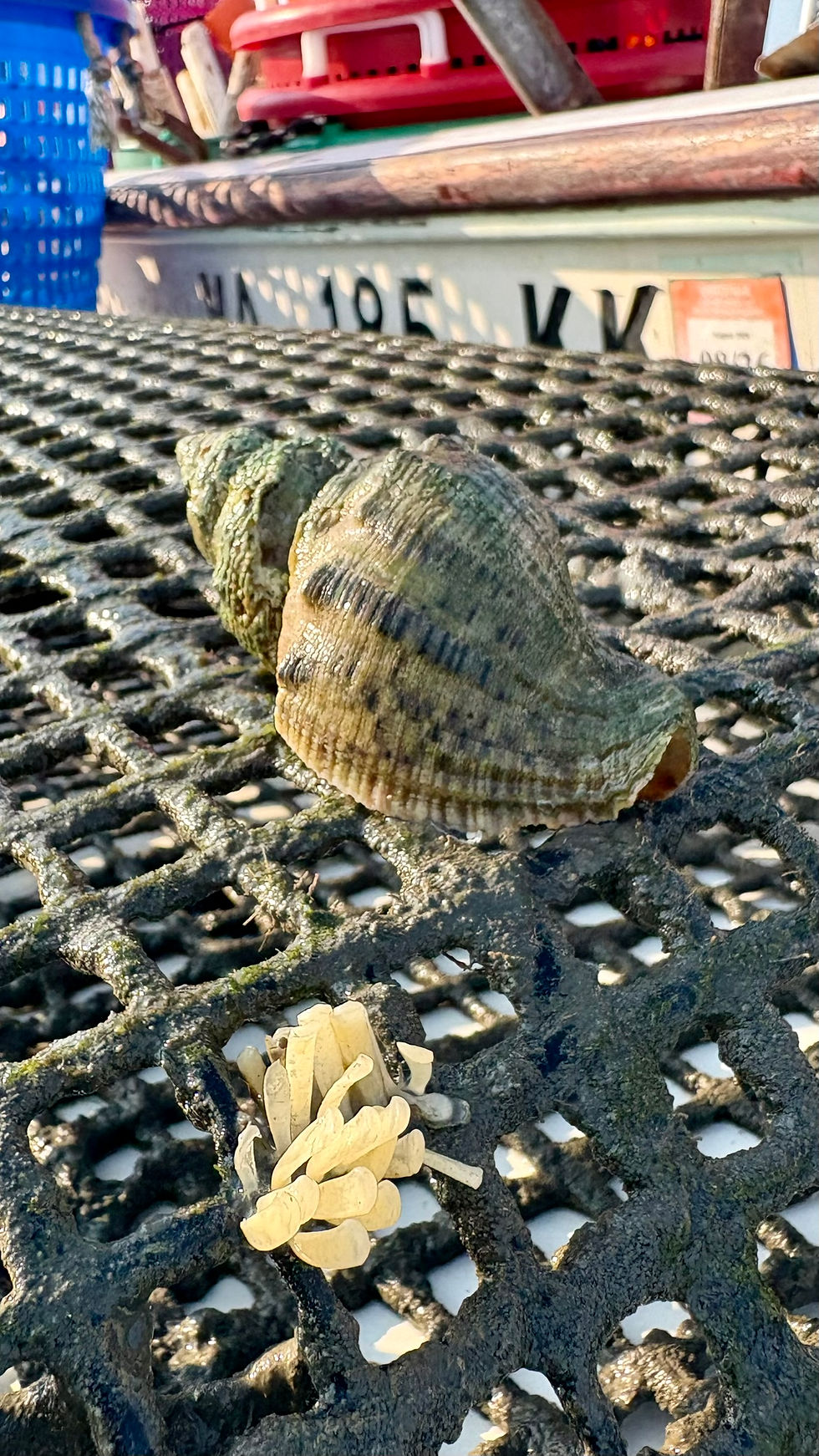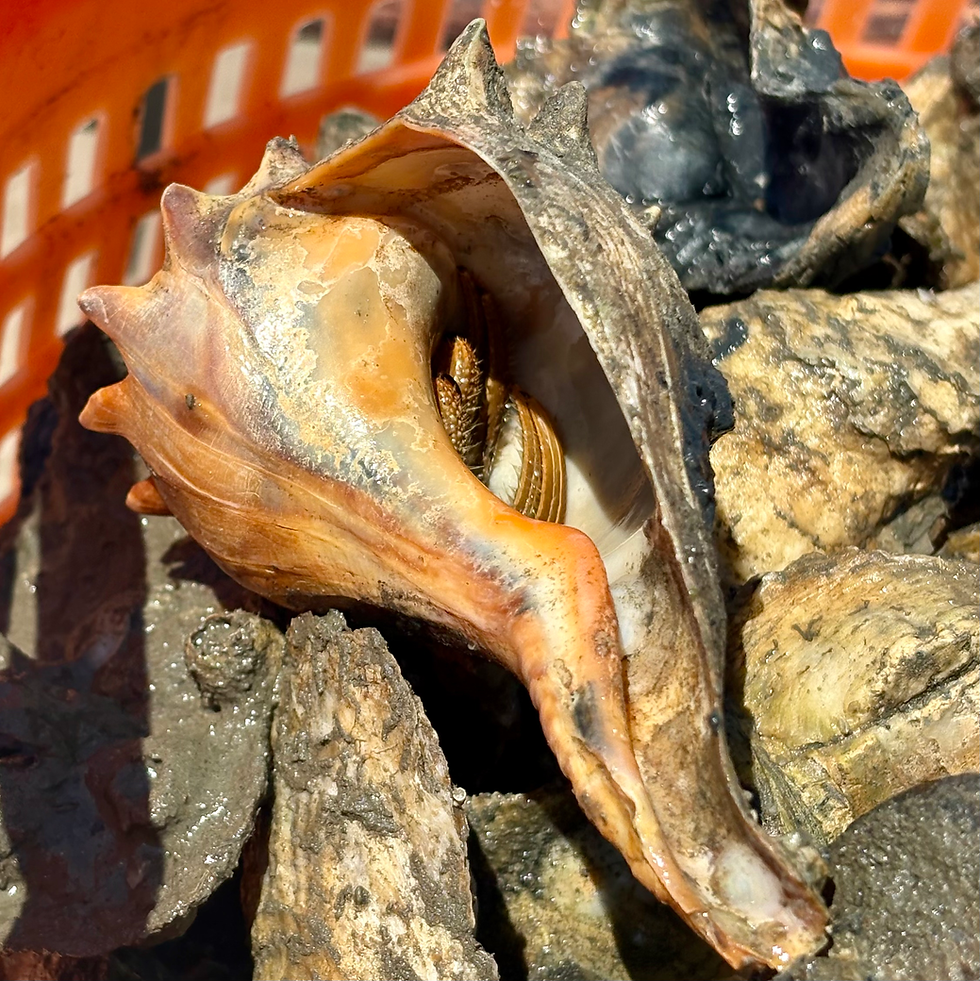Captive Critters: Driller Snail
- Chris

- Aug 16
- 2 min read
Updated: Aug 16

The Atlantic oyster drill snail (Urosalpinx cinerea), or just oyster drill, is a species of small predatory sea snail about an inch long when fully grown. The driller is a marine gastropod mollusk that feeds on other mollusks. They are members of the family Muricidae, the murexes or rock snail family.
The shells of driller snails resemble conch and whelk shells as all of these belong to the class Gastropoda (snails and slugs).
Predatory snails use chemoreception to locate their invertebrate prey which are typically sessile and unable to escape their pursuers. As such, snails primarily target shellfish like oysters, mussels, clams and barnacles.

The chemoreception super power allows the snail to detect microscopic particles that their prey releases into the sea water. And because their prey do not move, the predator slowly hones in.
Once drillers locate their prey, three other super-power adaptations go to work:
They first secrete an acid to help soften the shell and
Second, start to drill with their radula, a tooth covered tongue.
Once the shell has been breached, the snail injects a digestive enzyme that starts to digest the prey inside its own shell. The snail can then drinks the predigested animal through the hole.
Similar to how land based slugs and snails can decimate your home garden, the oyster drill is a serious problem for commercial oyster growers. Aquaculture oysters are particularly vulnerable as their shells are less dense as their native cousins. Regular handling and removal of the snails is the only preventative measure growers
can do to keep this predator at bay.

The shells of these marine snails are prized finds for shell collectors and beachgoers. But before they are a part of any human collection, they just might serve as shelter for other organisms like the aquatic hermit crab. (see photo)
Not all captive critters are out to get our oysters. Most are just trying to hide. Here are some of the other species we find: Oyster Toadfish, Spotfin Butterfly Fish
Juvenile Sheepshead, and shellfish like scallops and razor clams!




Comments